6 food myths with bold claims and skimpy evidence
Some advice about how foods or supplements protect your health gets repeated so often that we assume it’s true. But the evidence is often scarce.
MYTH: Foods can curb osteoarthritis
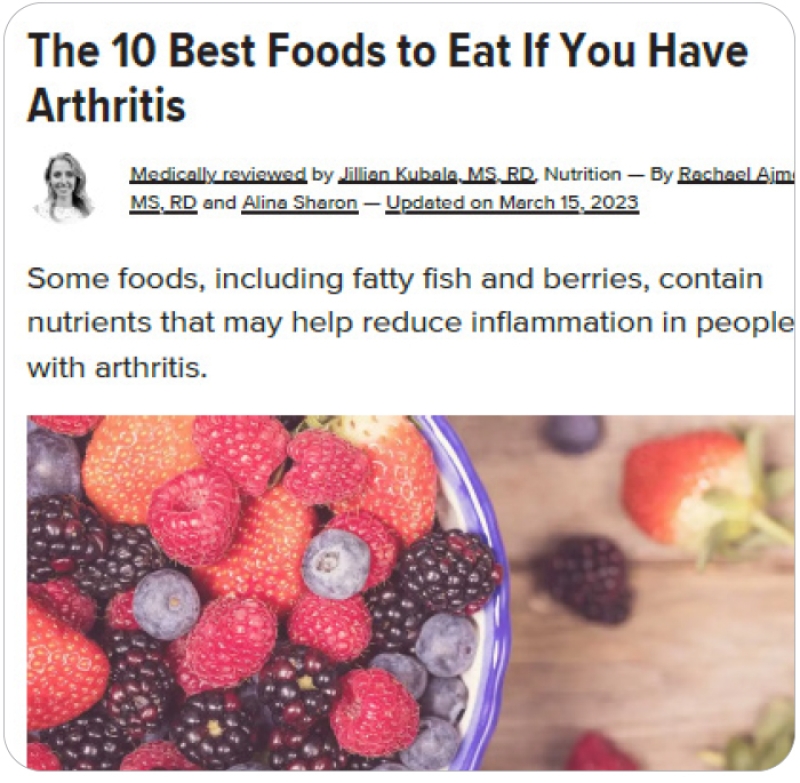
“Some foods, including fatty fish and berries, contain nutrients that may help reduce inflammation in people with arthritis,” says Healthline.com.
And the Cleveland Clinic’s website offers “10 Foods That Help Ease Your Arthritis Pain.”
But there isn’t much to back up those claims. And some websites make things worse by mixing up the two types of arthritis, as if any fix for one also works for the other.
“Osteoarthritis is one type that develops in joints with overuse,” says Healthline. “Another type is rheumatoid arthritis (RA), an autoimmune disease in which your immune system attacks your joints.”
“Fatty fish varieties such as salmon, mackerel, sardines, and trout are high in omega-3 fatty acids, which have been shown to have potent anti-inflammatory effects.”
But only one of the six “Trusted Sources” for Healthline’s information refers to osteoarthritis. And that source cites only two trials.
One of them randomly assigned 202 people with knee osteoarthritis to take either a low (450 milligrams) or high (4,500 mg) daily dose of EPA plus DHA (the main omega-3 fats in fish oil). After two years, those on the lower dose had less pain and better function. (No one got a placebo.) There was no difference between groups in knee cartilage volume or c-reactive protein (a sign of inflammation).
The second study, which also had no placebo, may not have randomly assigned people to the different groups.
What Healthline missed: The VITAL trial, which randomly assigned roughly 1,400 people with osteoarthritis and knee pain to take either 840 mg of EPA plus DHA or a placebo every day for five years.
“It didn’t do much for their knee pain,” says VITAL trial co-author Karen Costenbader, a rheumatologist at Brigham and Women’s Hospital and professor of medicine at Harvard Medical School. “Measures of pain, stiffness, and function were no different in the fish oil group than in the placebo group.”
That takes care of fish oil. What about the rest of the “10 Best Foods to Eat If You Have Arthritis”? The evidence for berries, broccoli, spinach, olive oil, walnuts, tart cherry juice, grapes, garlic, or ginger is also scant.
Maybe that’s why you won’t find them in the American College of Rheumatology/Arthritis Foundation’s 2019 guidelines for managing osteoarthritis (which doesn’t recommend taking fish oil).
Bottom line
Don’t rely on foods or fish oil to curb osteoarthritis pain.
MYTH: Water can curb constipation
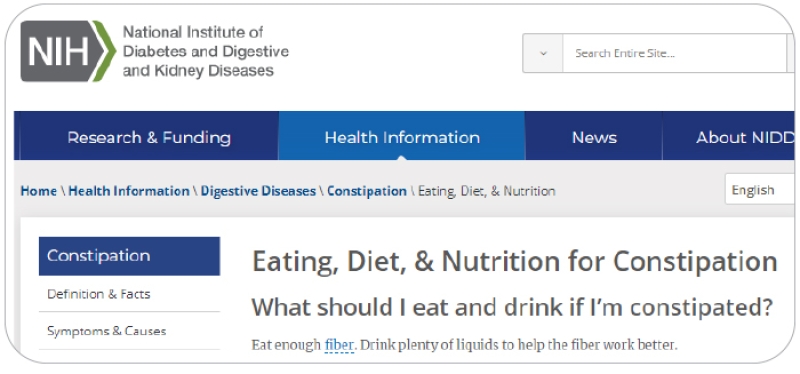
“What should I eat and drink if I’m constipated?” asks the National Institute of Diabetes and Digestive and Kidney Diseases website.
The answer: “Eat enough fiber” and “Drink plenty of liquids to help the fiber work better.”
Those liquids, says the NIDDK, include “naturally sweetened fruit and vegetable juices and clear soups” (never mind the calories or salt they’d add to your diet!).
Other websites offer similar advice. WebMD’s list of 14 foods that can help if you “can’t go” includes watermelon because “it’s 92% water, and that can encourage a bowel movement.”
But according to the American Gastroenterological Association, “there is no evidence that constipation can be treated by increasing fluid intake unless there is evidence of dehydration.”
“It’s a myth that not drinking enough water is a cause of constipation,” says Arnold Wald, professor of gastroenterology at the University of Wisconsin.
Only a few small trials have looked.
In one, people with constipation who were randomly assigned to drink 2 liters of mineral water a day had more bowel movements per week than those who were told to drink as much fluid as they wanted.
But “the mineral water contained magnesium that may have acted as a light laxative,” notes Wald.
A study in children with constipation came up empty, as did a third trial, in people without constipation who were also given wheat bran.
Why doesn’t extra water help?
“The intestines have to handle eight to 10 liters of fluid a day,” explains Wald. And most of it, like gastric juices, comes from inside the body.
“About 90 percent of the fluid is absorbed by the small intestine, and the colon absorbs most of the rest,” he adds. “If you drink more water, the intestines simply absorb more.”
How much fluid is left in the colon is finely tuned, says Wald.
The only exception: “If you’re dehydrated, the small intestines or colon may be more inclined to absorb more water.” That could lead to smaller, drier stools.
“Dehydration is usually due to medications or if you work outdoors in a hot zone or are an athlete who doesn’t drink enough water,” Wald explains.
Which drugs can be constipating?
“Some of the common diuretics and calcium-channel blockers that are used to control blood pressure and cardiac problems,” says Wald.
“Aluminum-based antacids, opiates of any type, lithium, and even cannabis could also be constipating in certain amounts.”
If you’re taking one of those drugs and are often constipated, better to ask for an alternative than to load up on water.
“The idea that you need to drink eight glasses of water a day probably does more harm than good,” says Wald, “because you urinate more often, and it disrupts your sleep at night.”
Bottom line
If your urine is the color of lemonade or lighter, you’re probably not dehydrated. Irregular? Eat more fiber-rich fruits, vegetables, beans, and whole grains. If that doesn’t work, try over-the-counter laxatives.
MYTH: Fish oil is good for dry eye
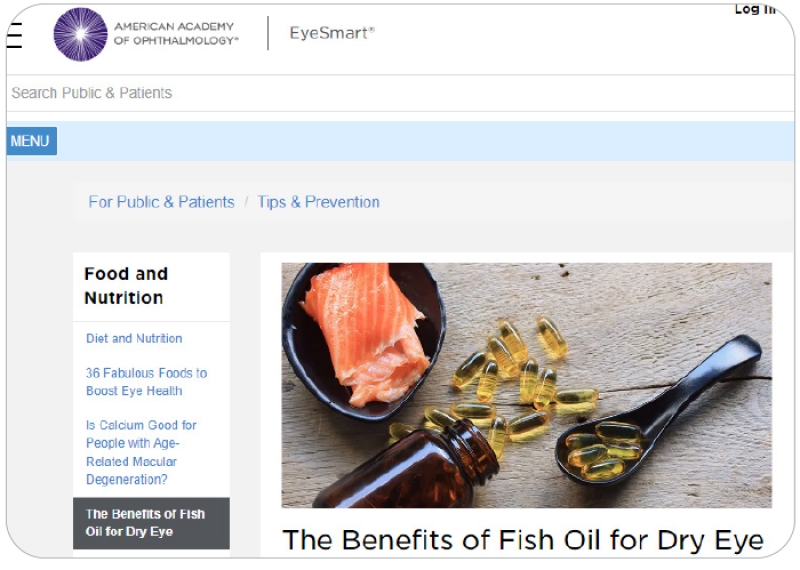
“Fish oil may help soothe dry eyes,” says the American Academy of Ophthalmology’s website.
And you can still find omega-3 supplements like Thera Tears, which is “formulated for dry eye symptoms.”
Did they miss the results of the DREAM study, a large randomized trial released in 2018?
“We randomized over 500 people from 27 sites across the United States to take either a placebo or 3,000 milligrams a day of omega-3 fats from fish,” says study co-author Penny Asbell, past chair of the ophthalmology department at the University of Tennessee Health Sciences Center.
“It was a real-world trial, so people could participate regardless of what treatments they were currently on, as long as they had both symptoms and signs of changes on the ocular surface consistent with moderate-to-severe dry eye disease.”
After one year, both groups had fewer symptoms and did better on tests like tear break-up time. “But there was no significant difference between the two groups,” says Asbell.
What might explain why fish oil helped in some earlier studies? “Many past trials were relatively small,” says Asbell. Most lasted three to six months.
Another strike against omega-3s: When researchers looked at 23,523 participants in the VITAL trial, those who took 840 mg a day of EPA plus DHA had no lower risk of getting dry eye than those who took a placebo.
So why do people still expect fish oil to help?
“It’s a safe treatment,” says Asbell. “And there’s money in it. Some providers sell it in their offices and make a profit. And it’s hard to change what people believe.”
Bottom line
Don’t rely on fish oil to treat dry eye.
MYTH: Sorbitol is the only additive that causes gas
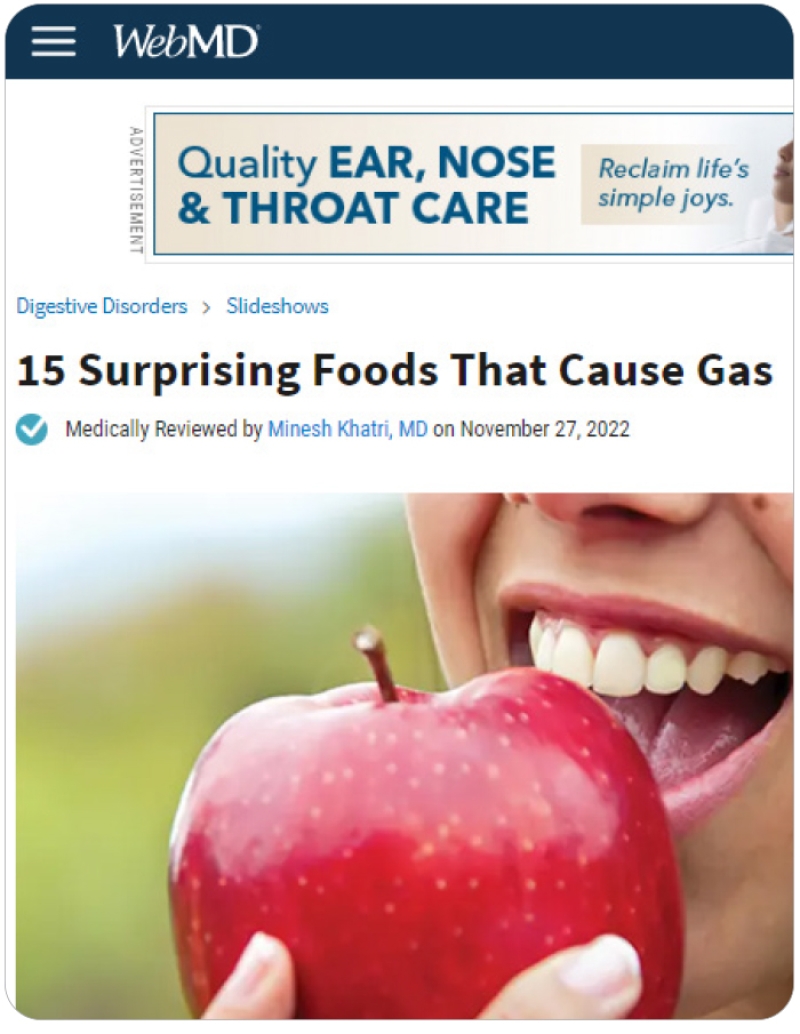
“Foods that cause excess gas,” according to the Mayo Clinic’s website:
- beans and lentils
- vegetables such as cabbage, broccoli, cauliflower, bok choy, and Brussels sprouts
- bran
- dairy products containing lactose
- fructose, which is found in some fruits and used as a sweetener in soft drinks and other products
- carbonated beverages, such as soda or beer
- sorbitol, a sugar substitute found in some sugar-free candies, gums, and artificial sweeteners
Yes, those foods can cause gas, at least in some people. But the list overlooks a couple of big-time gas generators: chicory root fiber—also called inulin—and its cousins, oligofructose and fructo-oligosaccharides.
“They’re incredibly fermentable,” explains Joanne Slavin, professor of nutrition at the University of Minnesota.
“When we compare inulin to other fibers in the lab, it gets fermented more quickly and produces more gas.”
In other words, gut bacteria gobble it up and give off gas when they break it down.
And chicory root fiber or inulin shows up in a host of foods. For example, it’s added to some
- yogurts or yogurt drinks (Activia Fiber yogurt, Chobani yogurt drinks)
- cereals (Kashi Go Crunch, KIND Soft Baked Granola Clusters, Wonderworks)
- most KIND bars
- cold brew coffees (La Colombe)
- frozen desserts (Halo Top, NadaMoo!, Rebel)
- beverages (Olipop, Poppi)
- protein bars (Clif, Fiber One, Luna, Protein One)
- shakes (Koia Protein, Iconic Protein)
It’s a “label-friendly sugar replacer that offers missing functionality like bulking, as well as a familiar health halo,” says Cargill, which sells Oliggo-Fiber inulin to food companies.
“Chicory root fiber also can serve as masking agent or a fat mimetic, as well as enhance product mouthfeel, texture and flavor in products.”
And it’s touted as a prebiotic—that is, it feeds (presumably healthy) gut bacteria. But that’s precisely why it causes gas and bloating.
“Inulin and fructo-oligosaccharides get fermented right at the beginning of the large intestine, and you get too much gas right there,” explains Slavin.
Shorter-chain versions are the worst.
“Fructo-oligosaccharides are produced by taking inulin and chopping it up chemically in a processing plant,” notes Slavin.
“With shorter-chain fructo-oligosaccharides, it’s pretty easy for gut bacteria to work on both sides of the chain, and they like it.”
That said, some people can tolerate more—or less—than others.
“Years ago, we did a study using ice cream with a high dose—20 grams—of inulin,” recalls Slavin. “Some of the young men knocked down the 20 grams and had no problems. But others had really bad flatulence. Certain people are really sensitive to it, and they need to stay away.”
Bottom line
If you’re gassy or bloated, cut back on foods with chicory root fiber, inulin, oligofructose, or fructo-oligosaccharides.
MYTH: It’s clear which foods trigger GERD
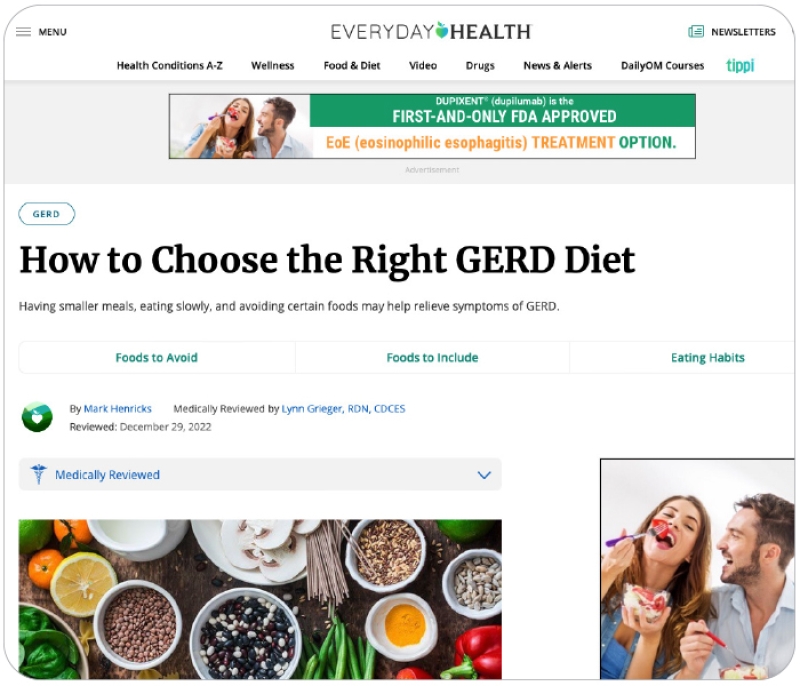
“Certain foods and beverages can exacerbate GERD symptoms, which include heartburn and a sour taste from regurgitation,” says EverydayHealth.com. (GERD is gastroesophageal reflux disease.)
EverydayHealth’s list: alcohol, caffeine, carbonated beverages, chocolate, tomatoes, garlic, mint, onions, spicy foods, fatty foods, and fried foods.
Advice from other websites—and even the National Institutes of Health—is similar. But the evidence is scant.
“The vast majority of advice that’s given to patients about GERD is based on anecdotal evidence, not science,” says Heidi Silver, research professor of medicine at Vanderbilt University Medical Center.
“Most is based on reports like ‘When I eat chocolate or tomato or drink coffee, I feel heartburn or pain in my chest.’”
According to the American College of Gastroenterology, the evidence for most advice about food and reflux is limited, “often involving only small and uncontrolled studies.”
So Silver decided to look at carbs, given that “the U.S. population has such an enormously high consumption of added sugars, about 17 teaspoons a day.”
Her study randomly assigned 95 people with GERD to eat one of four diets supplied by the researchers:
- a typical U.S. diet, which is high in both sugars (in fruits and sweets) and starches (in breads, cereals, pasta, rice, potatoes, etc.)
- less sugar
- less starch
- less sugar and starch
After nine weeks, only the “less sugar” diet was significantly better than the typical U.S. diet in cutting the number of reflux episodes and the amount of time the esophagus was exposed to acid—both measured with a device in the esophagus.
“Lowering only sugars had the strongest effect,” says Silver.
But the study was too small to be the final word.
“One group had a lot of variability in their initial acid levels,” notes Silver, “even though people were randomly assigned to groups.” That could explain some of the results.
Larger studies are needed, says Silver. Until then, “I think avoiding added sugars should be part of the conversation when clinicians and dietitians see patients with GERD. There’s no potential harm in cutting back. You can only benefit.”
Experts estimate that 30 percent of Americans have GERD.
“The true percentage may be higher because many people just take over-the-counter anti-reflux medications and never get diagnosed,” notes Silver.
And it’s not just sugars that need more testing, she adds.
“All of the foods that people are told to avoid should be tested to see which ones really do trigger symptoms.”
Bottom line
Until we know more, don’t assume that the oft-cited GERD triggers apply to you. Keep track of your own.
MYTH: Foods can raise testosterone levels
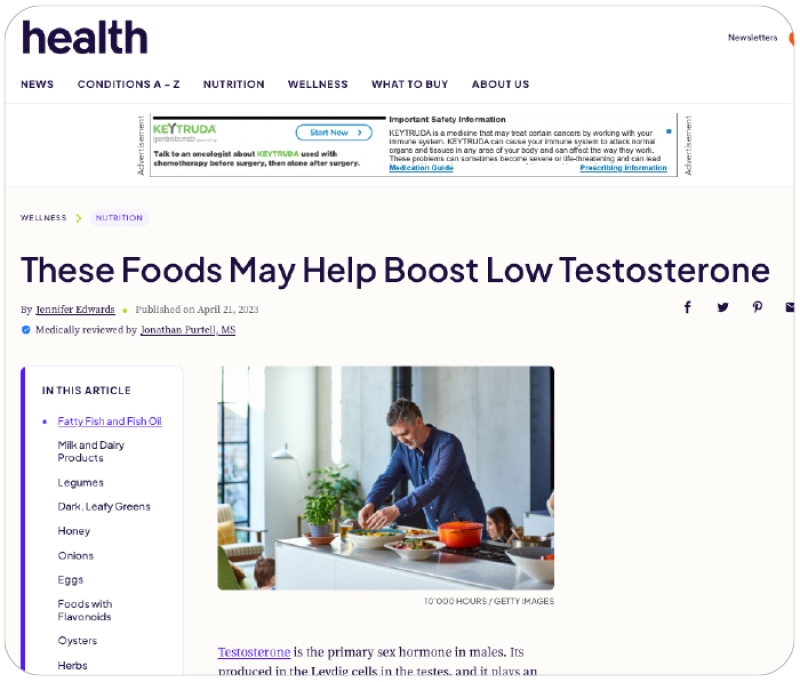
“Certain foods can boost your testosterone levels, or lower them,” claims Health.com. Among the boosters:
Fatty fish, fish oil
“A 2020 study following men and women with obesity found that taking fish oil with omega-3 fatty acids upped testosterone levels in men, but not women,” says Health.com.
But that study looked at only 22 men who got either fish oil or a placebo. In a trial in 925 men, fish oil had no effect on testosterone. Maybe that’s why the first study’s authors concluded that “further research is warranted to confirm and substantiate these findings before any clinical recommendations can be made.”
Dairy, legumes, leafy greens
“Researchers of a 2021 study followed 3,283 Taiwanese men over six years and found that those who ate a low-quality diet had poorer testicular function and low testosterone levels,” says Health.com.
“The men who ate a diet rich in leafy greens, legumes, and dairy had better testicular function and testosterone levels.”
First of all, the researchers didn’t follow the men for six years. They simply looked for foods that were linked to high versus low testosterone levels when the men filled out diet questionnaires at their annual health exam.
And other factors could explain those links.
“We cannot exclude other confounding factors such as energy or protein intake, occupational status, depression or stress, anxiety, prolonged exposure to high temperatures, environmental pollution, exposure to pesticides or chemical toxins (cadmium and lead), and radiation,” noted the authors.
Honey
“A 2019 review of the literature also found that honey can increase testosterone levels in men by increasing the production of luteinizing hormone, enhancing the viability of Leydig cells, reducing oxidative damage in Leydig cells, and inhibiting aromatase activity in the testes,” says Health.com.
In men? Nope. Twelve of the 14 reviewed studies tested honey on animals. In the two studies in men, honey had no impact.
Onions. “More clinical trials are needed to determine how onion can increase testosterone levels in humans,” says Health.com.
Yes, because only one of 12 studies in the review cited by Health.com was done on men...and onion extract didn’t raise their testosterone levels.
Bottom line
Don’t expect foods or fish oil to raise your testosterone levels.
Continue reading this article with a NutritionAction subscription
Already a subscriber? Log in
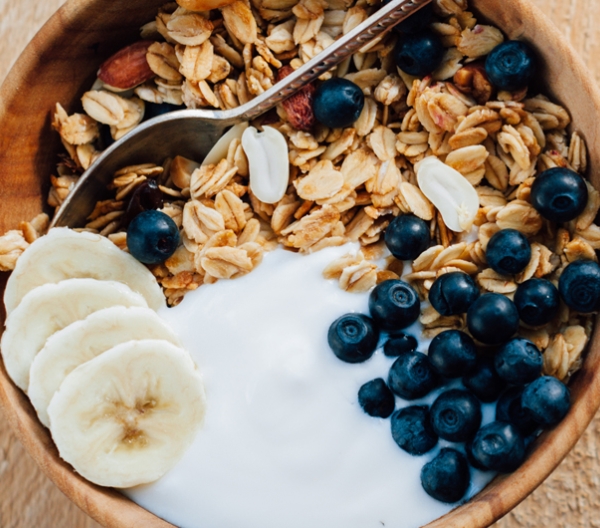
STAY IN TOUCH
Our best (free) healthy tips
Our free Healthy Tips newsletter offers a peek at what Nutrition Action subscribers get—healthy recipes, scrupulously researched advice about food of all kinds, staying healthy with diet and exercise, and more.

